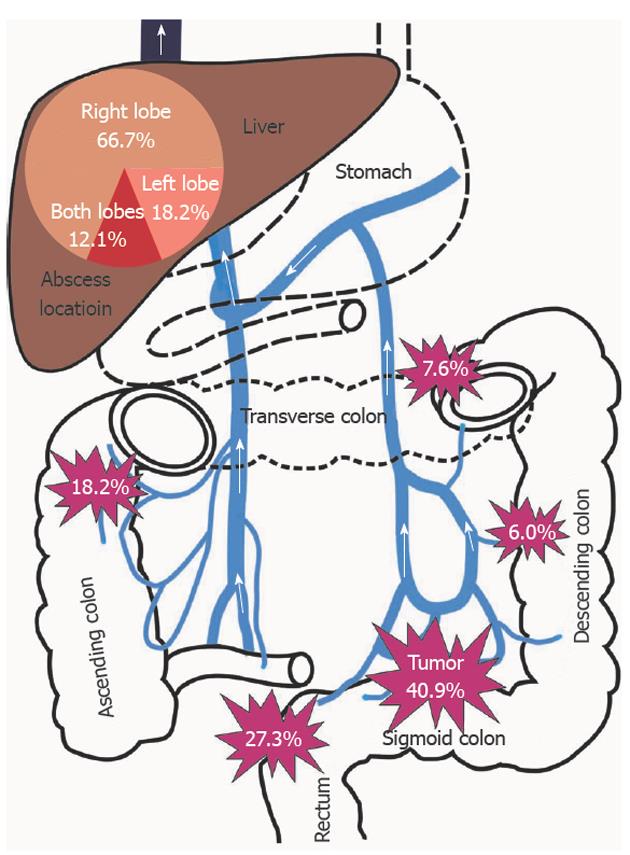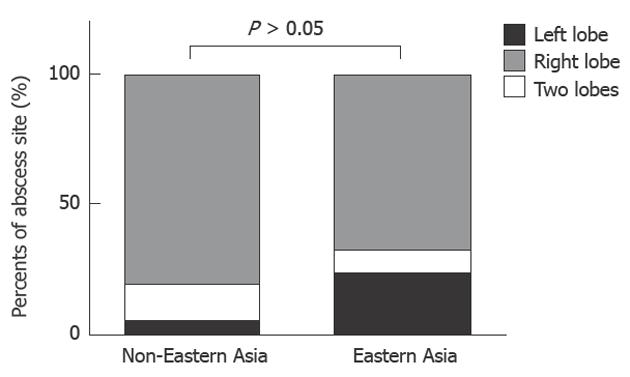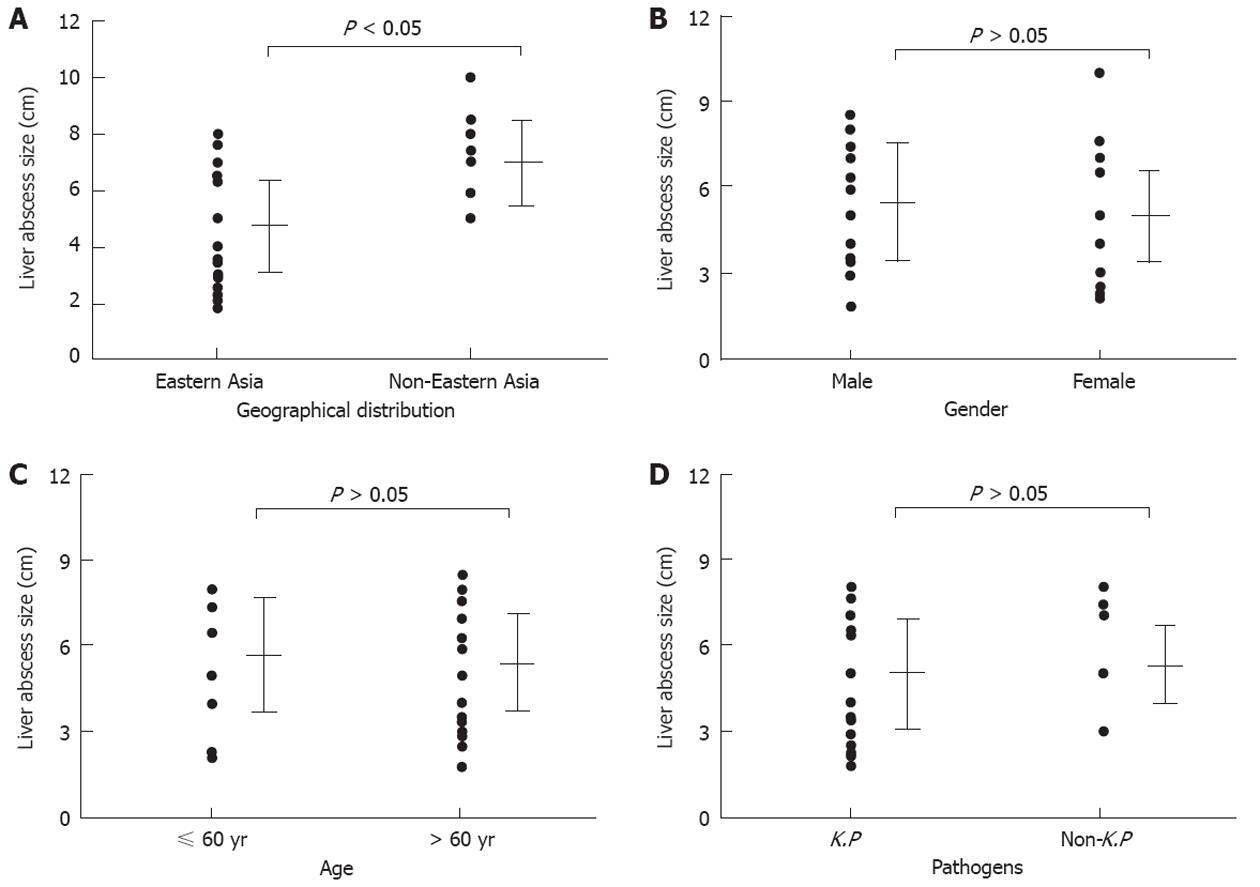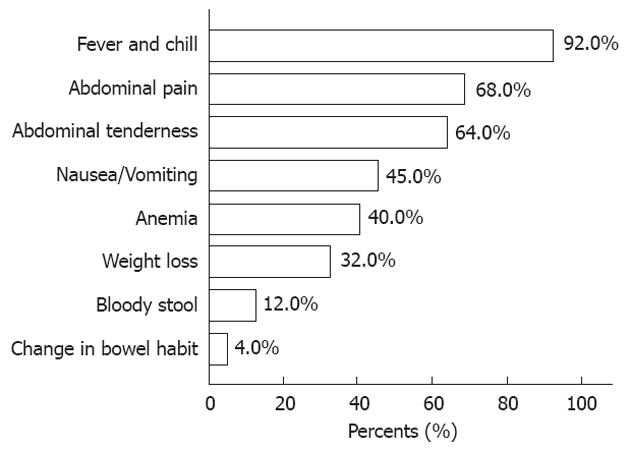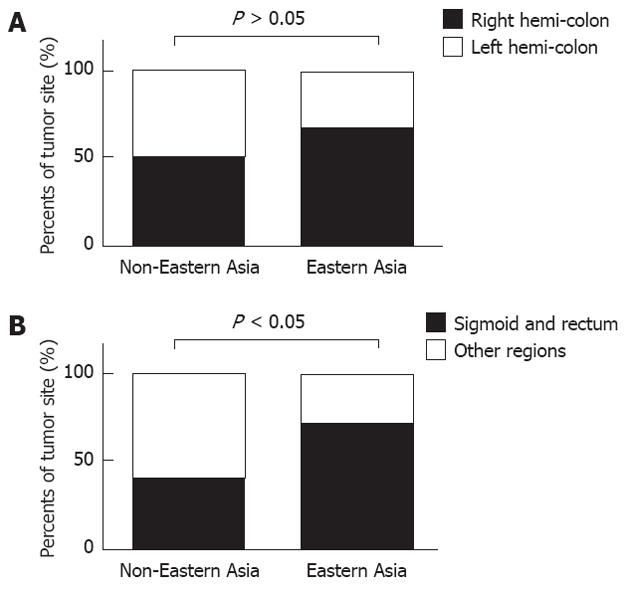Copyright
©2012 Baishideng Publishing Group Co.
World J Gastroenterol. Jun 21, 2012; 18(23): 2948-2955
Published online Jun 21, 2012. doi: 10.3748/wjg.v18.i23.2948
Published online Jun 21, 2012. doi: 10.3748/wjg.v18.i23.2948
Figure 1 Growth trend of reported cases in different countries/regions from 1960 to 2011.
Figure 2 Age distribution of reported cases in different countries/regions.
Figure 3 Categorization of pathogens in Eastern Asian and non-Eastern Asian patients.
A: Distribution of Gram-negative and Gram-positive pathogens; B: Distribution of Klebsiella pneumoniae (K.P) and non-K.P. There were significant differences in categories of pathogens between Eastern Asian and non-Eastern Asian patients (P < 0.01).
Figure 4 Distribution of colorectal cancer and liver abscesses.
Figure 5 Probability of abscess in different liver lobes in Eastern Asian and non-Eastern Asian patients.
There was no significant difference between the two groups (P > 0.05).
Figure 6 Univariate analysis of abscess size in colorectal cancer related pyogenic liver abscess patients.
A: Abscess sizes in different geographical groups; B: Abscess sizes in different gender groups; C: Abscess sizes in different age groups; D: Abscess sizes in different pathogenic groups. There was significant difference in liver abscess sizes between Eastern Asian and non-Eastern Asian patients (P < 0.05). K.P: Klebsiella pneumoniae.
Figure 7 Clinical presentations of colorectal cancer related pyogenic liver abscess patients.
Figure 8 Probability of cancer in different colorectal regions in Eastern Asian and non-Eastern Asian patients.
A: Probability of cancer appeared in the right and left hemi-colon; B: Probability of cancer in sigmoid and rectum and other regions. Sigmoid and rectum were the more common cancer sites, compared with other regions (P < 0.05).
- Citation: Qu K, Liu C, Wang ZX, Tian F, Wei JC, Tai MH, Zhou L, Meng FD, Wang RT, Xu XS. Pyogenic liver abscesses associated with nonmetastatic colorectal cancers: An increasing problem in Eastern Asia. World J Gastroenterol 2012; 18(23): 2948-2955
- URL: https://www.wjgnet.com/1007-9327/full/v18/i23/2948.htm
- DOI: https://dx.doi.org/10.3748/wjg.v18.i23.2948












